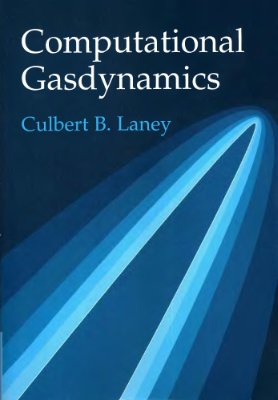Cambridge University Press, 2007. - 613 p.
(Library of Congress Cataloging-in-Publication Data).
This publication is in copyright, first published 1998.
Numerical methods are indispensable tools in the analysis of complex fluid flows, giving rise to the burgeoning field of computational fluid dynamics (CFD). This book focuses on computational techniques for high-speed gas flows, especially gas flows containing shocks and other steep gradients.
The book decomposes complicated numerical methods into simple modular parts, showing how each part fits and how each method relates to or differs from others. The text begins with a review of gasdynamics and computational techniques. Next come basic principles of computational gasdynamics. The last two parts cover basic techniques including the Lax-Friedrichs method, the Lax-Wendroff method, MacCormack's method, and Godunov's method, and advanced techniques, such as TVD, ENO, flux-limited, and flux-corrected methods. Every method is tested on the same carefully constructed set of test problems, which helps to expose similarities and differences under actual performance conditions.
Senior- and graduate-level students, especially in aerospace engineering, as well as researchers and practicing engineers, will use this single source to find a wealth of invaluable information on high-speed gas flows.
(Library of Congress Cataloging-in-Publication Data).
This publication is in copyright, first published 1998.
Numerical methods are indispensable tools in the analysis of complex fluid flows, giving rise to the burgeoning field of computational fluid dynamics (CFD). This book focuses on computational techniques for high-speed gas flows, especially gas flows containing shocks and other steep gradients.
The book decomposes complicated numerical methods into simple modular parts, showing how each part fits and how each method relates to or differs from others. The text begins with a review of gasdynamics and computational techniques. Next come basic principles of computational gasdynamics. The last two parts cover basic techniques including the Lax-Friedrichs method, the Lax-Wendroff method, MacCormack's method, and Godunov's method, and advanced techniques, such as TVD, ENO, flux-limited, and flux-corrected methods. Every method is tested on the same carefully constructed set of test problems, which helps to expose similarities and differences under actual performance conditions.
Senior- and graduate-level students, especially in aerospace engineering, as well as researchers and practicing engineers, will use this single source to find a wealth of invaluable information on high-speed gas flows.

